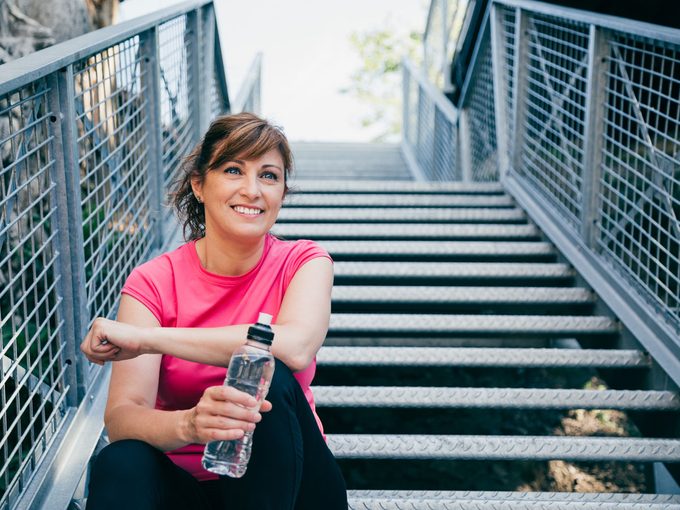This Kind of Training Is Crucial If You’re In Your 50s
It’s never too late to start exercising.

Genetic inheritance aside (we’re looking at you, Julianne Moore), how you lived when you were younger and how you choose to live now both have a major impact on how healthy you are when you step into your 50s. That old saying that “stuff catches up with you” will become more literal in this decade if you haven’t thought about your health before: Exercise in your 50s will be harder to attempt on your first go because you lose muscle function and healing ability. Plus, as you age, your body requires less energy, so if you continue to eat the same amount you did when you were younger, it’s fairly certain that you’ll be carrying a few extra pounds of weight as well.
How you should exercise in your 50s
Ugh. We know. But you can pause the clock, and here’s why: It’s never too late to start exercising. All you need to think about is that, as you age, your focus has to change: It’s no longer about “hitting the gym” to lift weights on a regular basis but more about building functional strength over developing an isolated muscle group. Functional strength is all about improving your abilities in those muscles that you would normally use in your everyday life: lifting, kneeling, reaching, getting up and down and climbing stairs. Training should focus on mimicking and improving these movements so that you can be “functionally fit.” Also, because the blood flow to your muscles and tendons can decrease (upwards of 30 to 40 percent), there is a higher risk of injury. Here are six essential cool-down stretches that are a must-add to your post-workout routine.
We’ve learned that, after 30, we lose muscle mass after each decade, but this rings particularly true after 50. “Generally speaking, you start to see the source of more lower back and knee problems,” says Andrew Steinfeld, a certified strength-and-conditioning specialist at Totum Life Science in Toronto, “along with bad habits when it comes to posture and range of motion.” A reduction in levels of anabolic hormones (responsible for building mass) and protein synthesis are important considerations, but activity levels are “massively important,” he says. “After 50, performance training, such as goals in the weight room or for sport, is fantastic to varying degrees,” he says. “But, increasingly, the idea of training for ‘activities of daily living’ is even more crucial.”
First step: Balance work
Steinfeld suggests that your first step be balance work: It’s easier to train and apply universally, regardless of your level of exercise and conditioning. “Stand on one foot for a minute,” he says. “Once that’s possible, do the same with your eyes closed. It’s a simple movement but not easily mastered. The more balanced you are, the greater your ease of movement in daily living.”
Second step: Mobility work
Mobility work is also key, especially in those areas of the body that help you with everyday tasks, such as your spine, shoulders, hips and ankles. Each joint can easily get “locked up,” so increasing your strength and mobility in those areas will yield many overall benefits. Think of wall Ws and Ys, Romanian deadlifts, glute bridges and full-range calf raises, all of which are designed to increase mobility through your hips and core. “Your body moves in all kinds of ways, not just forward and backward,” says Steinfeld, “and that’s important to remember when exercising. Your goal is to encourage your joints to stabilize and support your body weight, as well as build strength and muscle mass.”
Now that you’ve learned how you should exercise in your 50s, check out the yoga practice that is perfect for improving posture.




